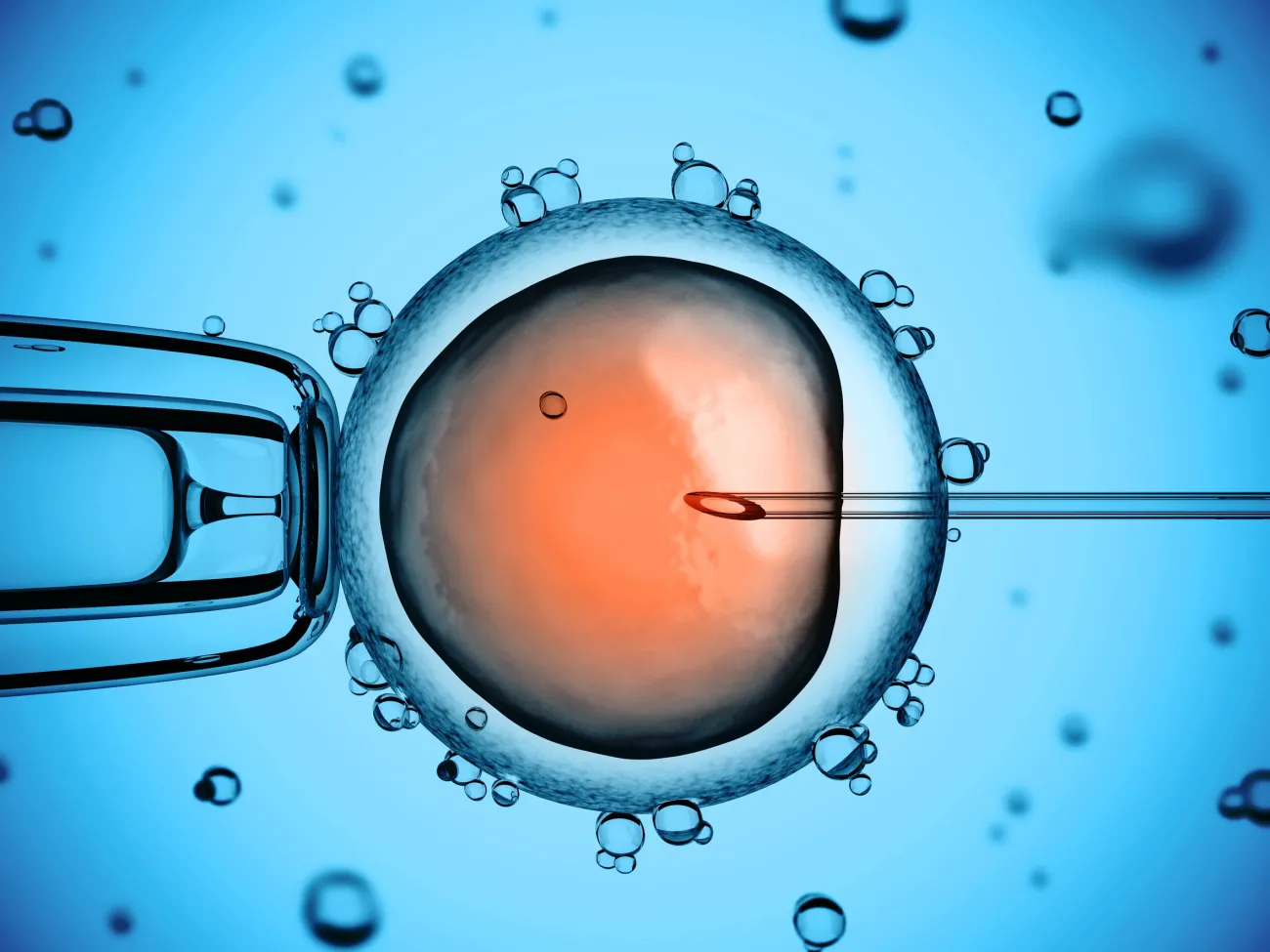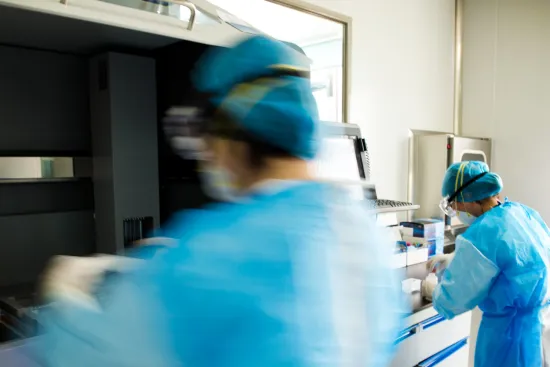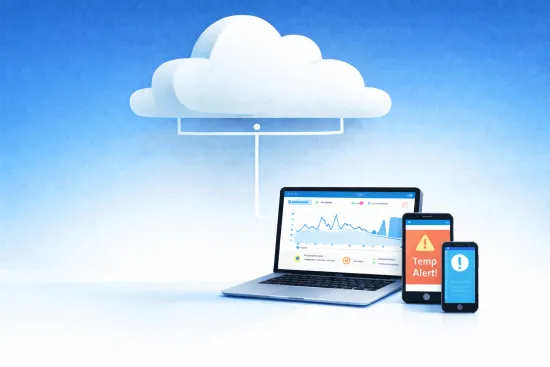EMS
Why IVF Labs Need Environmental Monitoring Systems to Protect Patients and Compliance
Author: Gagan Kaur
Sep 19, 2025

The Changing IVF Landscape
IVF labs today face higher expectations than ever before. More patients are turning to assisted reproductive technologies, and with that growth comes increased scrutiny from regulators, accrediting bodies, and patients themselves. Every embryo and sample entrusted to your lab represents a family’s future, and maintaining confidence means ensuring nothing is left to chance.
Why IVF Lab Monitoring Matters
In an IVF lab, even small environmental changes can have outsized consequences for embryos and patient outcomes. IVF lab monitoring refers to the continuous tracking of factors like temperature and humidity that directly impact the viability of embryos. Consider these critical areas:
- Cryogenic Storage: Embryos and gametes stored in LN₂ tanks must remain at exact conditions. A missed temperature excursion can mean irreversible loss.
- Incubators: Embryo development depends on stable CO₂, humidity, and temperature. A short outage or unnoticed drift can alter outcomes.
- Medication and Reagents: Storage conditions for media, hormones, and lab reagents directly affect their integrity.
Manual logs and basic alarms aren’t enough. Regulators like CAP and CLIA expect validated systems with accurate, retrievable records. More importantly, patients expect you to safeguard their future at every step.
How IVF Lab Monitoring Differs from Other Life Sciences
In most clinical and research labs, monitoring protects quality and compliance. IVF labs face a different bar:
- Embryo sensitivity: Minute changes in temperature, CO₂, humidity, or pH can affect embryo viability in ways that aren’t reversible.
- Irreplaceable samples: Gametes and embryos are one-of-a-kind; a single excursion can mean a lost cycle for a patient.
- Direct patient impact: Outcomes are tied to individual families, so expectations for transparency and reassurance are higher.
- Layered oversight: IVF labs often navigate CLIA/CAP plus fertility-specific standards and payer scrutiny, increasing documentation needs.
- High-risk assets: LN₂ storage, incubators, and media require tighter tolerances and faster response than many other lab settings.
Because the tolerance for error is so narrow in IVF, labs need monitoring that goes beyond basic alarms, systems built for continuous visibility, rapid alerting, and audit-ready records.
What an Environmental Monitoring System Brings to IVF Labs
An Environmental Monitoring System (EMS) designed for in vitro fertilization and other life sciences provides more than just alerts:
- 24/7 Monitoring & Alerts: Immediate notification if conditions drift outside safe ranges, no matter the time of day.
- Audit-Ready Records: Automated, tamper-resistant data storage that satisfies CAP/CLIA inspections without binders of handwritten logs.
- Risk Reduction: Protects against liability by documenting conditions before, during, and after any incident.
- Peace of Mind for Staff: Teams can focus on science, not worry about manual checks or overnight risk.
Why IVF Labs Are Embracing EMS Now
The rapid growth of IVF means more clinics, more patients, and more regulatory attention on lab environmental practices. Labs that invest in robust monitoring aren’t just preparing for inspections; they’re building trust with patients who ask, “How do I know my embryos are safe?”
Where Rees Fits In
For over 40 years, Rees has helped critical labs, from top pharmaceutical companies to leading hospitals, protect their work with validated monitoring. IVF labs benefit from that same expertise, combined with:
- Audit-Ready Compliance: Designed to meet CAP/CLIA and other regulatory standards.
- Largest Service Force in the Industry: 24/7/365 support with technicians available nationwide.
- Complete Lifecycle Services: Calibration, validation, and preventative maintenance to keep systems reliable.
We see ourselves not just as a vendor, but as a partner in helping IVF labs protect what matters most: patient outcomes and peace of mind.
Frequently Asked Questions
1. Do IVF labs really need an Environmental Monitoring System if they already log conditions manually?
Yes. Manual logs are prone to human error and don’t provide the level of detail or traceability that regulators expect. An EMS automates the process, reduces risk, and ensures records are always audit-ready.
2. How does an EMS support CAP and CLIA compliance?
CAP and CLIA require labs to demonstrate control over their critical environments. An EMS provides validated, tamper-resistant data, calibration records, and audit trails that meet these standards.
3. What happens if there’s an equipment failure after hours?
An EMS provides 24/7 monitoring and sends alerts by phone, text, or email. That means staff can respond immediately, even outside of normal operating hours, before a problem escalates.
4. Is installing an EMS disruptive to lab operations?
Not at all. Systems are installed and validated by trained technicians with minimal disruption. Once in place, they integrate seamlessly into daily workflows.
5. How does Rees support IVF labs after installation?
Rees provides ongoing calibration, validation, and preventative maintenance, plus 24/7 technical support. Our goal is to ensure your system remains reliable and audit-ready throughout its lifecycle.
Final Thought
For an IVF lab, monitoring isn’t just a technical requirement; it’s a responsibility to every patient who places their hopes in your care. An EMS helps you uphold that responsibility with confidence, compliance, and compassion.
If you’d like to explore how an EMS can strengthen your lab’s compliance and give your team greater peace of mind, our specialists are here to help you take the next step. Request an Assessment today!



